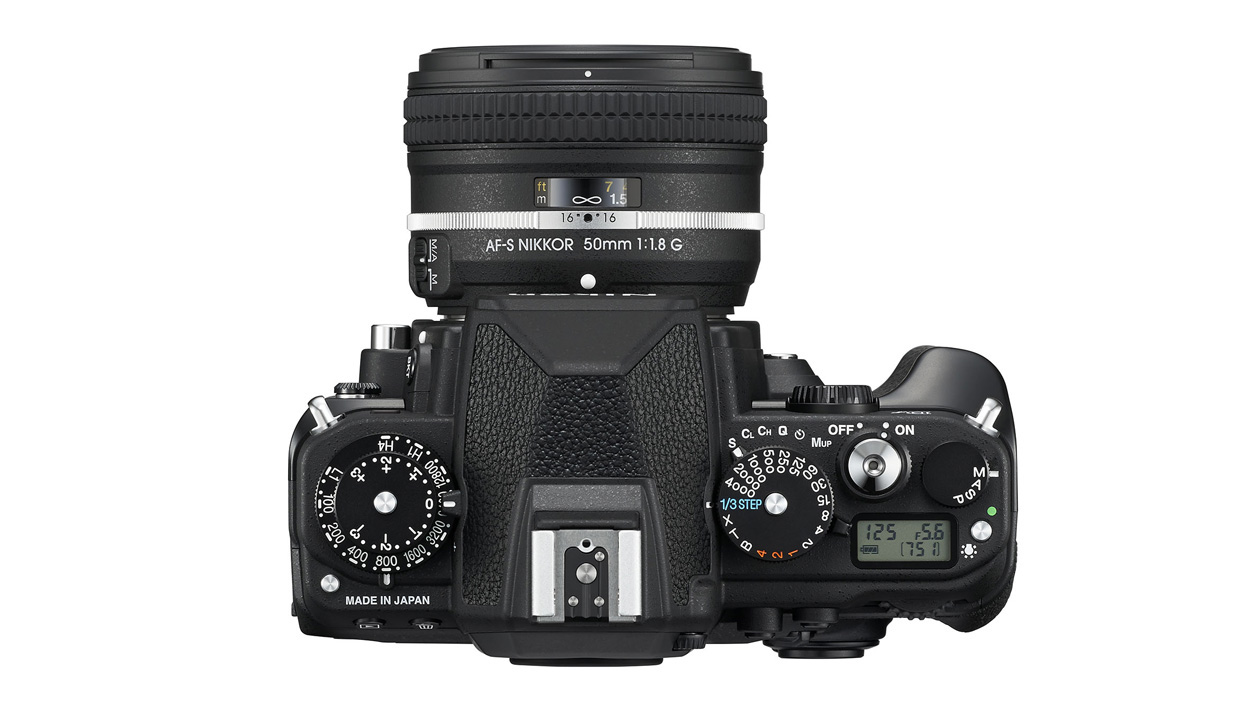Why you can trust TechRadar
We shoot a specially designed chart in carefully controlled conditions and the resulting images are analysed using DXO Analyzer software to generate the data to produce the graphs below.
A high signal to noise ratio (SNR) indicates a cleaner and better quality image.
For more more details on how to interpret our test data, check out our full explanation of our noise and dynamic range tests
Here we compare the Nikon Df with the Nikon D4 and D800, as well as two rivals, the Canon 5D MK III and the Sony Alpha 7R.
JPEG Signal to noise ratio
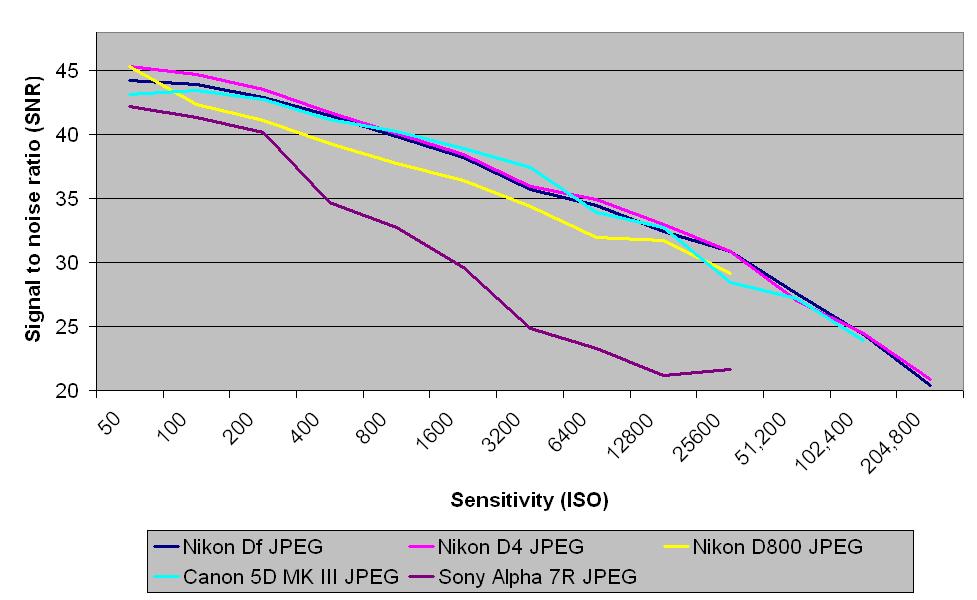
The Df's JPEGs are a very close match for the D4's in the mid and high sensitivity range, showing good control of noise and the ability to record lots of detail.
Raw (after conversion to TIFF) signal to noise ratio
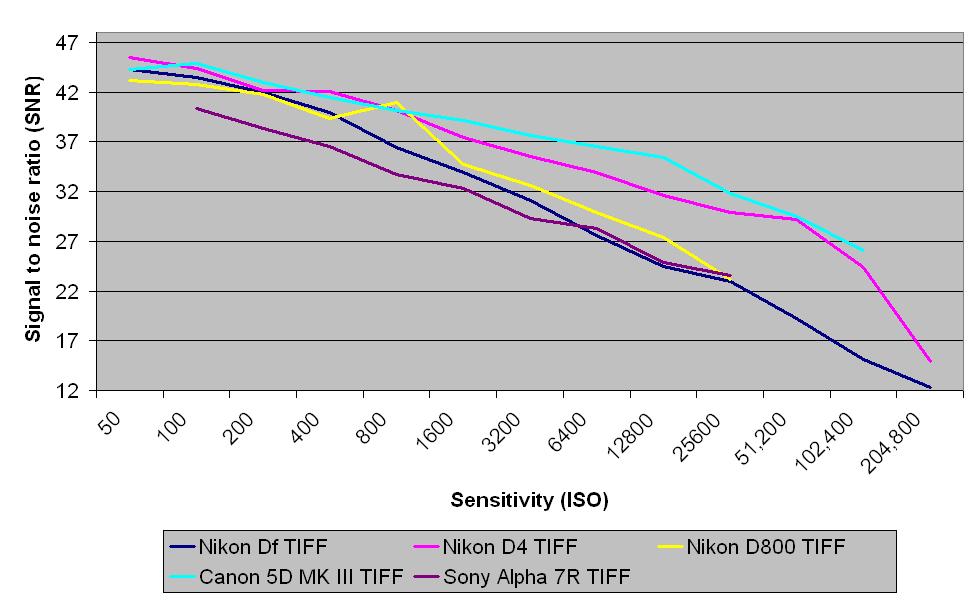
At the lower sensitivity settings the Df matches the D4 for signal to noise ratio, but as levels climb it drops behind a little indicating images are a bit noisier. This maybe to allow more detail to be resolved.
JPEG Dynamic range
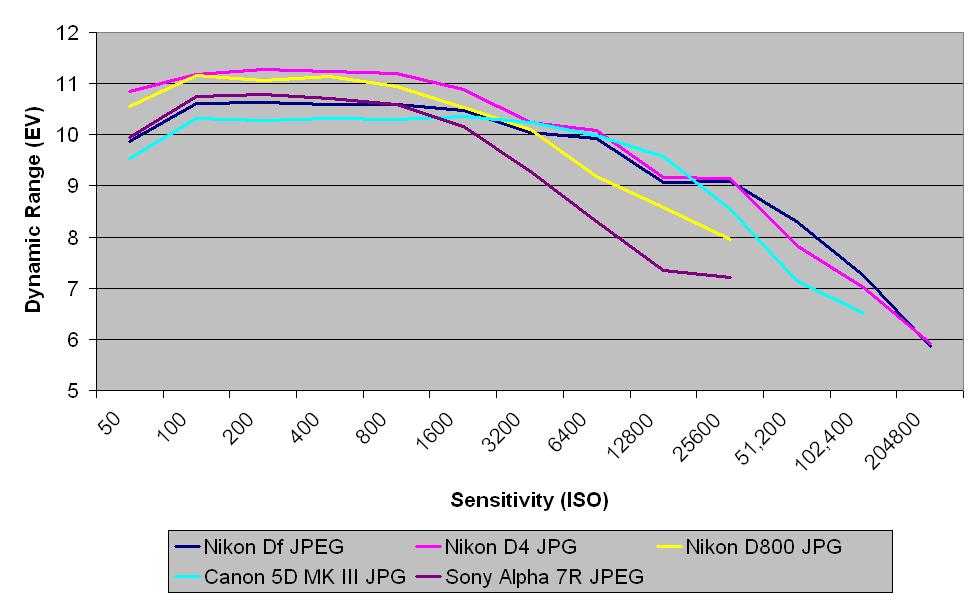
At the lower and mid sensitivity settings the Df's JPEG dynamic range is lower than the D4's, but this is likely to give images a bit more contrast straight from the camera.
Raw (after conversion to TIFF) dynamic range
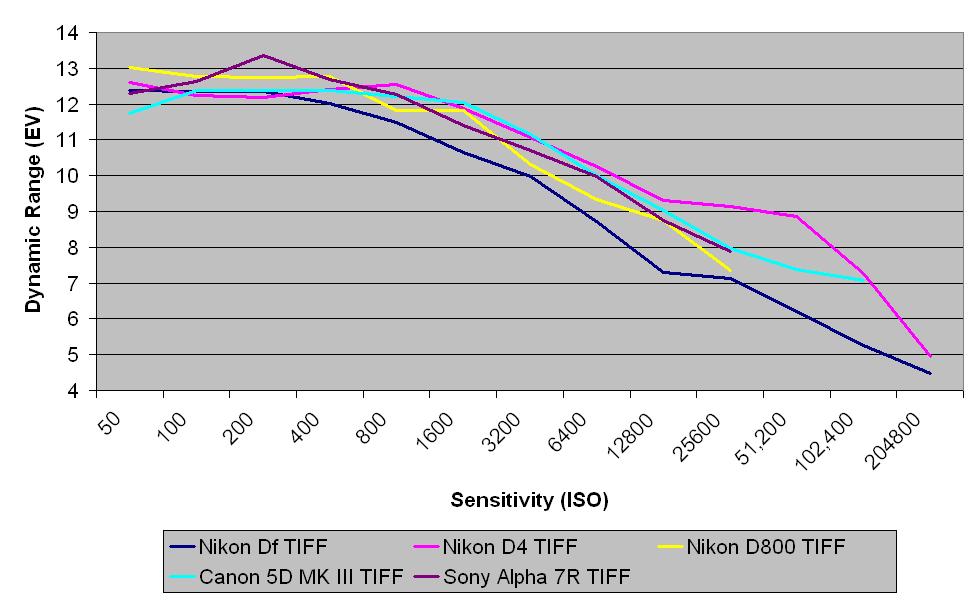
The Df's dynamic range is close to the D4's at the lower sensitivity settings, but it falls behind by about as sensitivity rises. This may be a result of the improved detail resolution and to boost contrast.
Current page: Noise and dynamic range
Prev Page Image quality and resolution Next Page Thoughts of a pro